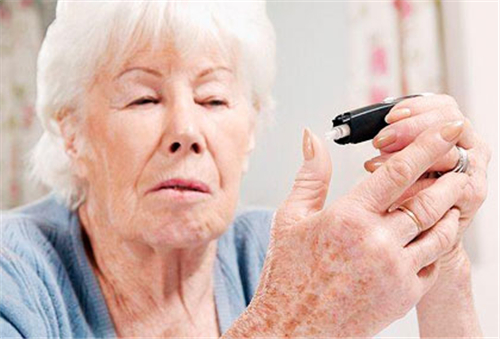Diabetic microangiopathy is a common pathological basis of a variety of serious vascular complications of diabetes such as diabetic nephropathy (DN), diabetic retinopathy, diabetic cardiomyopathy, diabetic wet gangrene. Microcirculation disorders, microvascular tumors and microvascular thickening of the basement membrane is a typical diabetic microangiopathy lesions.

The exact pathogenesis of diabetic microangiopathy in modern medicine has not been fully elucidated, but the following important hypothesis has been made.
-
Hemodynamic abnormalities
Hemodynamic changes are important initiators of microvascular disease. Hyperglycemia caused by renal perfusion, hyperfiltration is an important mechanism of occurrence of diabetic microvascular complications of DN, hyperglycemia by inhibiting tube ball feedback, to promote the release of prostaglandin, atrial natriuretic peptide and atrial natriuretic peptide secretion and increased NO secretion Glomerular access arterioles dilated, glomerular pressure increased, causing glomerular hyperfiltration.
-
Protein non-enzymatic glycosylation
In hyperglycemic environment, non-enzymatic glycosylation occurs in all kinds of tissue proteins. In the early stage of glycosylation, glucose and protein are chemically combined to form reversible early glycosylation products, which are rearranged and cross-linked The formation of glycated end products (AGE), AGE once generated, can be life-long deposition of long-lived protein in the vessel wall, resulting in increased capillary permeability, basement membrane thickening, blood stasis, and even microvascular occlusion and diabetic microangiopathy.
-
Polyhydric alcohol channel activity
Polyol channel activity is composed of a series of enzyme systems, the most important are aldose reductase, hyperglycemia, polyol channel activity increased, aldose reductase activity increased in the aldose reductase catalyzed glucose to sorbitol Increasing the process, a large number of sorbitol in the accumulation of cells, and become one of the major chronic complications of diabetes mellitus.
-
Organize its own oxidation and glycosylation
It is believed that there is a wide range of non-enzymatic glycosylation and oxidative modification reactions of protein in diabetic patients, and the two promote each other. As a result, lipid oxidation, superoxide radical and non-enzymatic glycosylation cause damage to the tissues together with microvascular Permeability and microvascular basement membrane thickening and other pathological changes.
-
Angiotensin Ⅱ (AT Ⅱ) and cell growth factor
In recent years, with the progress of molecular biology, AT Ⅱ and a variety of cytokines such as interleukin-6 (IL-6), tumor necrosis factor (TNF), transforming growth factor (TGF- Occurrence and development of diabetic nephropathy. AT Ⅱ can cause glomerular afferent arterioles contraction, glomerular capillary pressure caused by proteinuria and glomerulosclerosis, IL-6 can stimulate mesangial cell proliferation and promote mesangial cells to produce type IV collagen; TGF -β can increase the expression of type IV collagen messenger ribonucleic acid (mRNA), can stimulate mesangial cells to synthesize and secrete collagen IV, TNF can promote mesangial cell proliferation and extracellular matrix secretion.
-
Hyperlipidemia
In recent years, studies have shown that lipid metabolism disorders through the generation of oxygen free radicals, induced platelet aggregation and release, mononuclear? Macrophage infiltration and release of a variety of hydrolases and cytokines, interference with prostaglandin synthesis and other mechanisms involved in diabetic microvascular Lesions of the pathological process.
-
Microcirculation disorders
A large number of studies have confirmed that microcirculation disorders are commonly found in patients with diabetic microangiopathy, which mainly include microvascular changes in morphology, disturbance of micro-blood flow, changes in blood physicochemical properties, hypercoagulation, high concentration, high concentration and high viscosity, An important mechanism of diabetic microangiopathy. The above theories have some theoretical and experimental basis, but they can not fully elucidate the pathogenesis of diabetic microangiopathy, therefore, to strengthen the basic research on the pathogenesis of diabetic microangiopathy is particularly important.
Leave a Reply